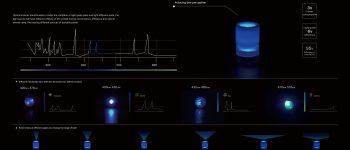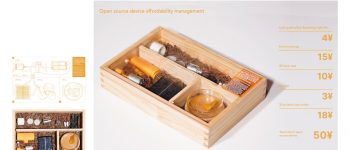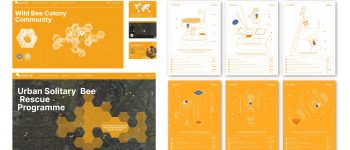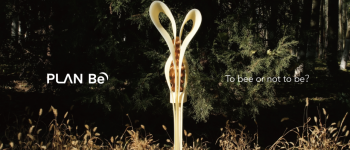The magnetic fields created by millions of RF transmitters in urban environments interfere with the signal perception of foraging habitats by urban solitary bees, thus also affecting pollination services between plants and pollinators.
Plan-Be is an open-source action network program with the survival of urban solitary bees as its well-being. The hope is to enable bee pollination in the midst of environmental challenges by placing Beecon, a light-inducing device that enhances signals from foraging habitats, in urban spaces. Using Beecon as a point to gradually restore urban habitats, we will synergize human design actions with the biological behavior of honey bees, and develop and shape urban hybrid landscapes with the well-being of honey bees and other habitats as a point-to-point strategy.
The global pollination crisis under electromagnetic haze is a pressing issue. We hope that beecon, as a response to environmental change, raises awareness about practical tools and solutions.
Urbanization and technological advancements have led to the widespread distribution of radio frequency transmitters and low-frequency electromagnetic fields, significantly interfering with the foraging behavior of solitary urban bees. Research indicates that electromagnetic pollution impairs bees' cognitive functions, pollination abilities, and homing behaviors, thereby threatening the essential ecosystem service of plant pollination. The decline of bee populations not only endangers biodiversity but also exacerbates the pressures on agricultural production and food security. While there is growing research on electromagnetic pollution, effective solutions remain scarce—especially those tailored to the survival and adaptation of solitary bees in urban settings.
Approach:
Plan-Be introduces an innovative two-pronged solution:
Beecon Light-Lure Device:
Combines blue-violet light spectrum (430nm-480nm) with a specially designed scent mixture to enhance bees' magnetic field perception of foraging habitats through light-magnetic coupling.
Guides bees to food sources using olfactory cues.
During the day, Beecon improves bees' foraging efficiency and pollination performance; at night, the blue-violet light stimulates plant metabolism, fostering growth and increasing ecosystem diversity.
Beeing Open-Source Network:
Provides a low-cost, user-friendly open-source platform that empowers communities to customize and deploy Beecon devices.
Encourages ecological intervention using unused community resources.
Supports habitat restoration efforts while enabling the monitoring and recording of bee and environmental health.
Through this dual approach, Plan-Be places the well-being of bees at the core, leveraging open-source design principles and ecological conservation strategies. By reducing the impact of electromagnetic pollution, the project promotes harmonious coexistence between humans and nature.
Eco Vision Plan (China)
Beijing Pinggu District beekeeping Association, China






